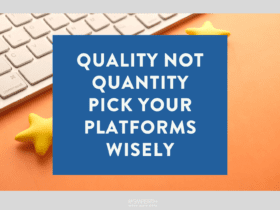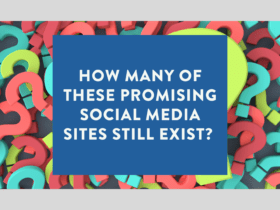For many freelancers and sole traders, the brand and the person are often one and the same – especially in social media.
And that can mean finding the right balance between the personal brand and the professional.
Each social network can reveal different aspects of someone’s personal brand.
Like most people, on LinkedIn I restrict my activities to my professional self. But on Twitter I tweet all of me, not just the carefully curated professional bits. While some of my tweets are related to content marketing, writing and freelancing, a lot more are playful banter, rants about news stories, fanatical obsessions with Doctor Who and comics – and the occasional scream into the void.
Not everyone views each network the way I do and that’s only the way it should be. It’s interesting to see how other marketers, writers and freelancers choose to present themselves on social media, each sitting somewhere on a sliding scale from all business to all play.
So how do you determine where your personal brand should sit on this sliding scale?
All business
Some accounts operate almost exclusively as an automated feed of curated articles – a pure thought leadership strategy with little to no direct interaction with followers.
Jeff Bullas (@jeffbullas) uses Twitter as a regular tickertape of content, but don’t follow if you hope to get to know the man behind the machine.
Pros: Can create a large and regular social media footprint through automation.
Cons: Can appear inauthentic or anti-social, particularly if the account rarely interacts or replies to comments beyond the clockwork flow of shared links.
Perfect for: Marketers looking to rapidly scale follower numbers. And robots.
Splitters
One account for work and another for play. One with your business name and logo, the other with your personal name and quirky headshot.
An obvious example here is how our founder Meg Coffey (@TexanMeg) uses separate accounts for her @smperth and @state_of_social brands.
Pros: The brand account can focus on specific topics to build an audience of potential customers, undiluted by other social media activities.
Cons: Account-switching mishaps can lead to an inappropriate message going to the wrong audience. Also, routinely sharing the same business content from both accounts can lead to one cannibalising the audience, reach and engagement of the other.
Perfect for: Professionals with multiple brands, and brands with multiple professionals.
Networkers
These users may combine a casual avatar or headshot with a professional handle – making it clear that the business is the person. Will participate a lot in professional discussions, Twitter chats and the like, while also allowing their personality to shine through. You may be just as likely to find out what they’re enjoying on Netflix as any advice they may have for other freelancers.
US PR consultant Michelle Garrett (@PRisUs) is a perfect example of a professional feed – right down to the choice of handle – that still shares personal opinions or offer glimpses into her home life.
Pros: Professional, but authentic. Humanises the business and brand, giving potential clients a sense of who they would be working with.
Cons: Can lead to a diverse audience following the account for different reasons, requiring the user to maintain a balance across more topics, both professional and personal.
Perfect for: Freelancers and micro businesses.
All You
Finally, there are those who just post whatever they’re thinking; work, rest or play. On Twitter, I definitely fall into this category, partly because I started tweeting years before I went freelance. As a result, my biggest social media footprint represents me first and my professional life second.
Pros: Honest and authentic – after all, you’re saying what you really think. Far more intuitive and improvised; able to join almost any conversation.
Cons: May alienate followers and potential clients who disagree with some of your opinions.
Perfect for: People who don’t distinguish between their personal and professional selves.
When considering which approach may be right for you, don’t forget social networking is two words. While networking with industry leaders and potential clients is what many of us want to achieve, and is incredibly useful to cultivating a personal brand, this is still very much a social environment.
In many ways, social media has more in common with the pub after work or the evening drinks at a conference. Sure, we may continue to talk shop, but we’ll also talk about anything and everything else while the beer holds out.
Ultimately, it’s fine to be yourself. Relax. We’re all friends here.









LET’S CONNECT